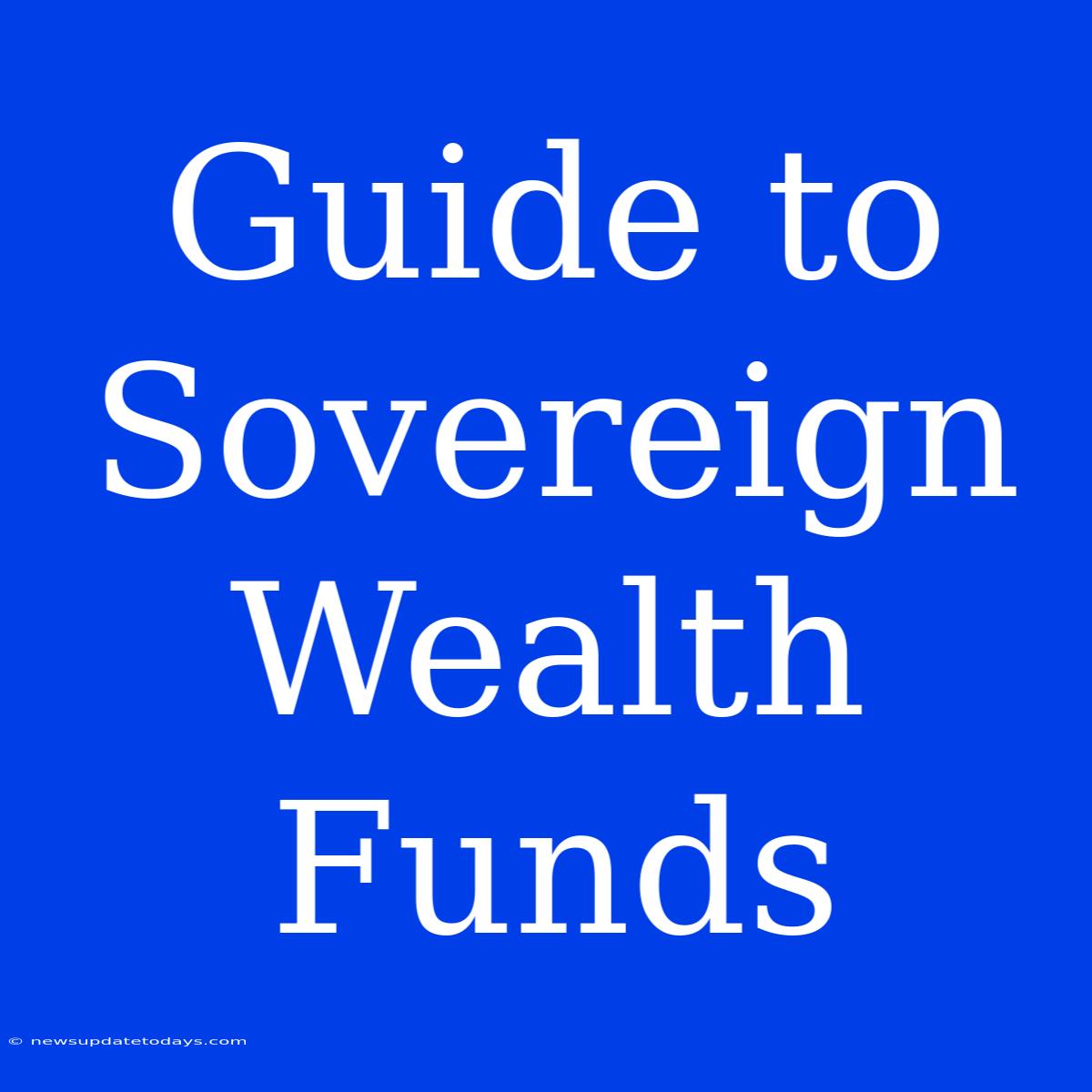Decoding Sovereign Wealth Funds: A Comprehensive Guide
Sovereign Wealth Funds (SWFs) are investment vehicles controlled by governments, holding assets accumulated from various sources like oil revenues, foreign exchange reserves, and fiscal surpluses. Understanding their operations, investment strategies, and impact is crucial in today's globalized economy. This guide provides a comprehensive overview of SWFs, delving into their structure, motivations, and the significant role they play in shaping global financial markets.
What are Sovereign Wealth Funds?
SWFs are essentially state-owned investment funds that manage significant pools of capital on behalf of their respective governments. Unlike traditional pension funds or mutual funds, their primary mandate isn't to maximize returns for individual investors. Instead, their objectives are often broader, encompassing economic diversification, wealth preservation, and future generations' welfare.
The capital accumulated within these funds stems from various sources:
- Natural resource revenues: This is a common origin, especially for countries rich in oil, gas, or minerals. Revenue generated from the extraction and sale of these resources is channeled into the SWF.
- Foreign exchange reserves: Central banks often accumulate substantial foreign currency reserves, a portion of which might be managed by an SWF.
- Fiscal surpluses: Governments with consistent budget surpluses can allocate excess funds into SWFs for long-term investment purposes.
- Privatization proceeds: Revenue from the sale of state-owned enterprises can also contribute to SWF assets.
Types of Sovereign Wealth Funds
SWFs are categorized based on their investment mandates and funding sources:
- Stabilization Funds: These funds primarily aim to buffer economic volatility caused by fluctuations in commodity prices or other external factors. They often act as a counter-cyclical mechanism, smoothing out budget imbalances.
- Reserve Funds: Focused on preserving and managing a country's long-term assets. Their primary goal is to maintain the purchasing power of the reserves over time.
- Development Funds: These funds are geared towards supporting domestic economic development, often investing in infrastructure projects or strategic industries within the country.
- Pension Reserve Funds: Designed to secure future pension obligations, ensuring adequate retirement benefits for citizens.
Investment Strategies and Global Impact
SWFs employ diverse investment strategies, ranging from low-risk, highly liquid assets to more aggressive, long-term investments in equities, private equity, and real estate. Their involvement significantly influences global markets:
- Market Liquidity: Their considerable capital can inject significant liquidity into global markets, particularly during periods of economic uncertainty.
- Portfolio Diversification: SWFs seek to diversify their portfolios geographically and across asset classes, mitigating risks and enhancing returns.
- Infrastructure Development: Many SWFs invest heavily in infrastructure projects globally, contributing to global development and growth.
- Geopolitical Implications: SWF investments can also have geopolitical implications, reflecting a country's foreign policy objectives and strategic partnerships.
Notable Sovereign Wealth Funds
Several SWFs stand out due to their scale and influence:
- Norway's Government Pension Fund Global: One of the world's largest, renowned for its ethical investment approach and substantial holdings in global equities.
- The Abu Dhabi Investment Authority (ADIA): Known for its long-term investment horizon and diversified portfolio across various asset classes.
- China Investment Corporation (CIC): A significant player in global financial markets, investing in a wide range of assets.
- Singapore's GIC: A highly successful and discreet investor with a long track record of consistent performance.
Challenges and Criticisms
Despite their significant contributions, SWFs also face challenges and criticisms:
- Transparency and Accountability: Concerns exist regarding the transparency and accountability of some SWFs, particularly regarding their investment decisions and governance structures.
- Political Influence: Their substantial investments can raise concerns about potential political influence and interference in target countries.
- Competitive Advantages: SWFs' access to significant capital can give them a competitive advantage over private investors.
Conclusion
Sovereign Wealth Funds are integral players in the global financial landscape. Their impact on global markets, infrastructure development, and economic stability is undeniable. While challenges and ethical considerations remain, understanding their operations and investment strategies is vital for navigating the complexities of the modern global economy. Further research into individual SWFs and their specific investment mandates will provide a deeper understanding of their diverse roles and contributions.

